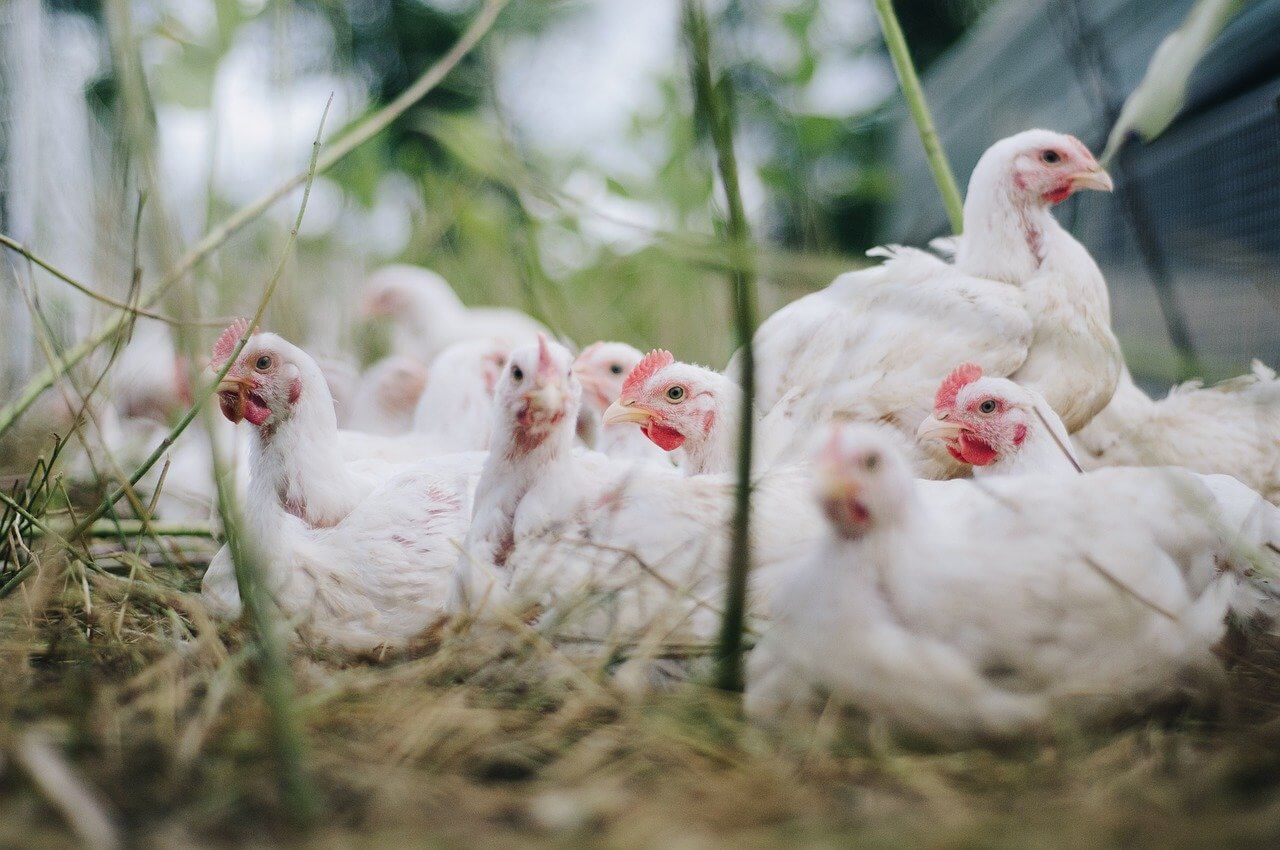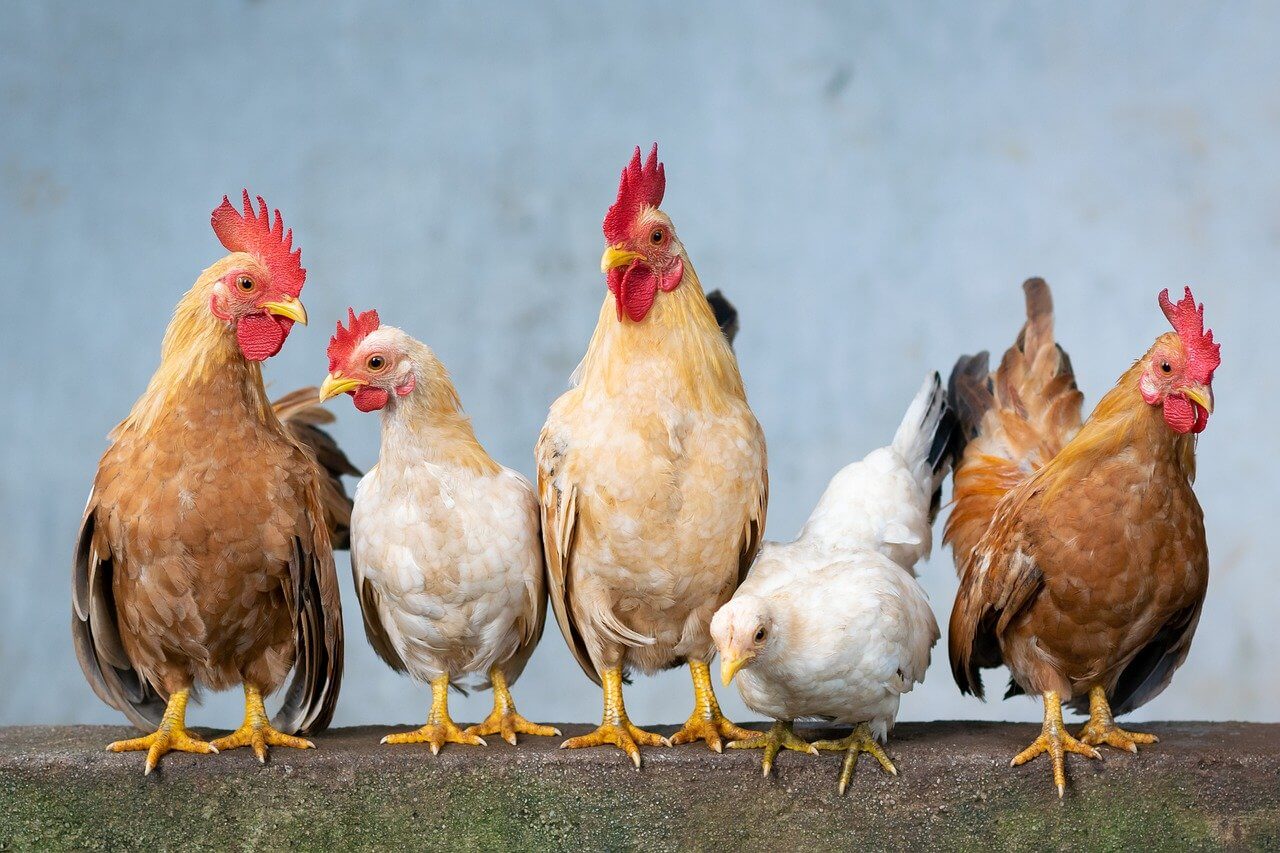It can be both frustrating and exciting when you’re waiting for your young chickens to start laying their first eggs. There are indications to let you know when it’s about to happen and how to tell if a chicken is laying eggs. Let’s take a closer look at this article where you can learn all about it.
What You'll Learn Today
How Old is a Chicken When it Starts Laying Eggs?

The age at which a chicken starts to lay eggs depends on its breed and condition.
Chickens that regularly start laying early, between 16 and 18 weeks of age, are usually commercial strains and include:
- Leghorns
- Golden Comets
- Plymouth Rocks
- Australorps
Hens that start laying later, usually from 20 to 40 weeks of age, include:
- Black Ameraucana
- Jersey Giant
- Buff Brahma
If a chicken is not receiving a nutritious, high protein diet necessary for producing eggs, it can delay how soon the bird will start laying.
Layers feed should be 16% protein and needs to be supplemented with calcium, which can be provided by feeding crushed oyster shells which will be available from your feed store.
How Do I Get My Chickens to Start Laying Eggs?
There is no magic way to get your chickens to start laying eggs. It all depends on the breed of the bird, nature and the conditions being right.
To see if there may be an obvious problem, check these six points:
- Your hen may still be too young.
- The diet you are feeding may be too low in protein. She needs 20 grams a day or a layer pellet that is 16% protein when she reaches maturity.
- Plenty of clean, fresh water is required.
- There may not be enough daylight. Most hens need a minimum of 12 hours a day, although 14 to 16 hours is preferable for regular laying.
- More delicate breeds of chicken won’t lay when the temperature is below 50°F and will lay best when it is between 52°F and 79°F. Some hardier breeds will lay regardless of temperature, providing their diet and water intake are sufficiently good.
- Some breeds, such as the Ayam Cemani, lay in cycles with long periods off lay in between.
How Do You Know When Chickens Are Ready to Lay Eggs?
There are a few things you can look out for to see if your chickens are ready to lay eggs.
Red Combes and Wattles. As your chickens mature or come back into lay after winter, you’ll notice that their comb and wattles become more erect, fuller, and deeper in color when they are ready to lay. This is due to hormonal changes.
Exploration
If your young hens start testing out the nest boxes, it’s a sure sign they are getting ready to lay. You can put a few fake eggs inside the nest boxes to encourage them.
Egg Song
Have you ever noticed a chicken that’s just laid an egg starts telling the entire flock about it? Young hens also tend to become more talkative right before they begin to lay.
Appetite
If your young females start gobbling down extra rations, it could be a sign they’re getting ready to start producing eggs. Making eggs takes a lot of energy, so make sure you’re providing the right food.
Squatting
If your hen squats and spreads her wings slightly when you approach her and place a hand on her back, then she will soon be laying. The reason a hen squats is to show she is submissive and ready to be mated by a rooster. Fertility and laying eggs go hand in hand.
In this video, you’ll be shown how to tell if your young hens are ready to start laying eggs.
Difference Between Laying and Non-Laying Hen
A non-laying hen can be identified by a few differences from a laying one. Even birds of the same age, being fed the same exact things, can lay at different times.
Here are a few ways to identify if a bird is laying or not. The techniques can also be used to find older birds who have gone off lay or are no longer very productive.
Watch Closely
By observing your hens carefully, you should be able to identify any that don’t go and sit in the nest boxes. It is usual for a hen to sit for several minutes before laying.
This may be more difficult if you can’t tell your hens apart.
Egg Observation
If you only have a few hens and they lay different color eggs, you’ll quickly know which one isn’t laying by the missing egg color from your collections.
Leghorns and Minorcas lay white eggs, Welsummers and Marans dark brown eggs, Plymouth Rocks, Rhode Island Reds, and Orpingtons light brown eggs, and Cream Legbar and Americaunas blue-green eggs.
Health
A lethargic bird that is run down or sickly looking is probably not laying eggs. Birds that are healthy and plump with upright, intensely colored combes and wattles are more likely to be producing eggs.
Examination
The best time to closely examine your hens is at night when they are sleepy. Use a flashlight or headlamp to see what you’re doing and gently pick up each bird.
Holding her wings against down, gently turn her upside down under your arm. Her head should be facing behind you. Now use your free hand to gently feel the bones on either side of her cloaca (where the eggs and droppings come out). If the bones are three or four fingers apart, she is probably laying. Less than this, she is not.
The cloaca of a laying hen is generally moist and will be a pale color. A non-laying hen may have a dryer, yellowish vent that appears more closed.
How Often Should I Collect Chicken Eggs?

It is best to collect your eggs regularly and not leave them in the nest boxes for any length of time. The exact number of times you collect eggs each day will depend on how many chickens you have.
When in full swing, you can estimate that at most, each bird will lay one egg a day. Most hens lay in the first six hours after sunrise, although they can lay at any time of day but not at night.
If you only have a few birds, you can probably just collect eggs once a day, around lunchtime is good. But if you have 20 or more, several collections may be required.
The reasons for not allowing the eggs to remain in the nest boxes for too long are:
- It prevents them from becoming damaged, cracked, or dirty if several hens use the same nestbox.
- It helps stop your hens from eating the eggs.
- It prevents predators from stealing the eggs.
- You always know how old the eggs are. This is important for two reasons, they should be fresh to eat, and if you want to hatch them out, you have to incubate them within a limited time period, or fertility will be lost.
If you want a hen to go broody, it is better to use fake eggs, such as those made of ceramic or wood, to entice a hen to sit. Once you see one of your chickens is broody, then you can place the most recent eggs you collected under her.
Never use eggs more than 10 days old for hatching, as their viability will be much diminished after this.
Conclusion
It is possible to tell if a chicken is laying eggs, providing you know what to look for. Being able to tell layers from non-layers is beneficial, as it helps you see if you have any problems with the feed you are providing, the health of your hens, and how quickly your young hens have matured.
Additional benefits include knowing if you may have a hen who is no longer laying regularly or one that is eating eggs.
If you enjoyed reading this article, on how to tell if a chicken is laying eggs, you might find others on our site of value too.
Do you know how many times do chickens typically lay eggs a year?